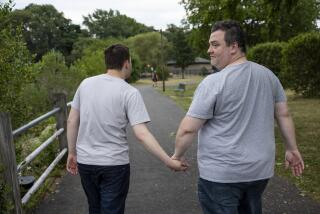Autism may be linked to defects in mitochondria, UC Davis study says
- Share via
Autistic children have a high incidence of defects in mitochondria, the “powerhouses” of cells, but it is not yet clear if those defects are a cause of the disorder or a byproduct of some more fundamental defect, UC Davis researchers said Tuesday. Mitochondria create energy for cellular metabolism and when they are dysfunctional, cells do not operate efficiently. That can be particularly disruptive for cells, such as brain cells, that have high energy demands. A lack of energy for brain cells during development could help explain why children with autism do not function properly. Only the heart consumes more energy than the brain, and defects in mitochondria have already been shown to accompany other neurological conditions, including Parkinson’s disease, Alzheimer’s disease, schizophrenia and bipolar disorder.
There have been previous reports of isolated cases of mitochondrial dysfunction in children with autism, but no comprehensive studies. In part, that has been because such studies have looked at mitochondria in muscle tissues. That involves invasive procedures, and may not be a good source of information because muscles also get energy from glycolysis, which does not involve mitochondria.
To get around this problem, molecular biologist Cecilia Giulivi and her Davis colleagues decided to study mitochondria in white blood cells, which are more accessible and produce energy in much the same fashion as mitochondria in brain cells. They enlisted 10 autistic children, ages 2 to 5, from Northern California who had been enrolled in a previous study at Davis and 10 healthy children of the same age.
The team reported in the Journal of the American Medical Assn. that one of the 10 autistic children had a full-blown mitochondrial respiratory disease -- a much higher rate than is seen in the normal population -- and that more than half of them had some problems with their mitochondria. For example, their mitochondria consumed far less oxygen than those from healthy children, a sign of lowered mitochondrial activity and reduced energy output. Other abnormalities were also present and levels of hydrogen peroxide within mitochondria were twice normal, indicating that the cells were exposed to high oxidative stress.
“The various dysfunctions we measured are probably even more extreme in brain cells, which rely exclusively on mitochondria for energy,” said co-author Isaac Pessah, director of the Center for Children’s Environmental Health and Disease Prevention at UC Davis.
Giulivi cautioned that the findings do not amount to establishing a cause for autism. “We took a snapshot of the mitochondrial dysfunction when the children were 2 to 5 years old. Whether this happened before they were born or after, this study can’t tell us,” she said. But if the study can be replicated, she added, it might help in diagnosing autism earlier.




